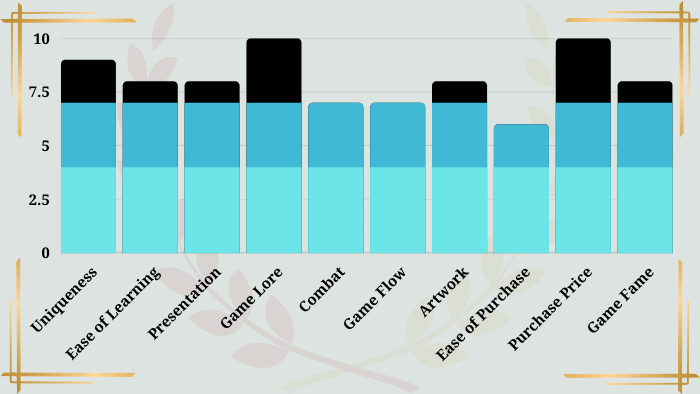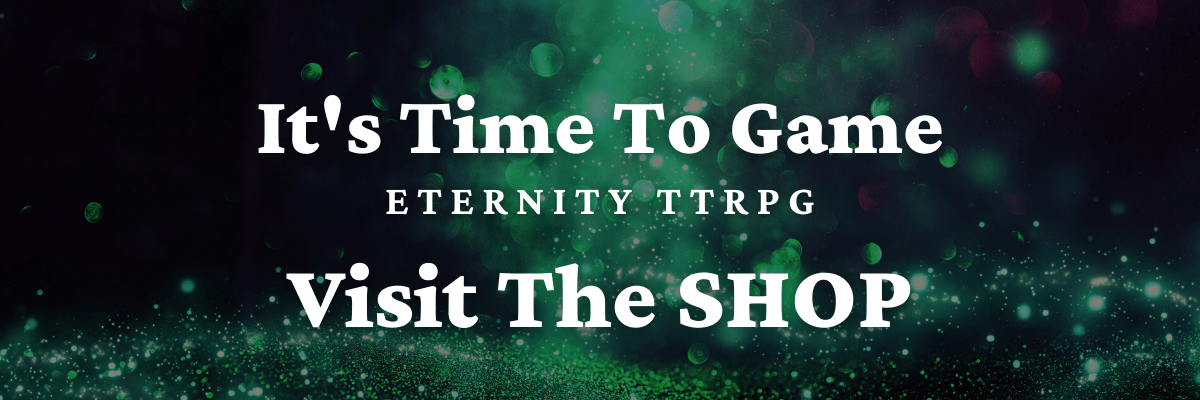Home > TTRPG Reviews
Shadowrun 6th Edition Review
This Shadowrun 6th edition review is part of my “Best Tabletop RPGs of All Time” article. If you want to check out more TTRPGs and see how other top-tier tabletop RPGs are ranked, visit that page.
My Review – 81 / 100

Shadowrun is a game set in a distant future. It’s a dark and gritty world where hackers, organized crime, tech and cyborg parts dealers, and thugs abound. It’s a world where corporations/ government have near-absolute control.
Shadowrun is the cyberpunk genre at its best. Play as a cyborg samurai, a sniper, a tech wizard, and more. Think something that shares similarities with a setting like “Ghost in the Shell” and you have a good idea what the game’s about. The biggest difference is that there are true magic-users in Shadowrun, in addition to “tech wizards.”
Shadowrun Uniqueness: (9/10)
Shadowrun’s game mechanics are unique, and the setting is very unique.
Skill checks are resolved by rolling a pool of 6-sided dice equal to your character’s skill value, plus attribute score relevant to what you’re trying to accomplish. You always succeed by rolling 5’s or 6’s on your dice, and you have a limit to how many “successes” you can count according to the limits for that action (ex: weapons only allow you to have so many “successes” from a roll, depending on the weapon’s quality). Get enough “successes,” and your skill check passes.
If you roll half of your total dice as 1’s, a “Glitch” occurs, which throws in additional challenges and problems.
I like that Shadowrun keeps things simple with the target numbers you want to roll for your dice. Since you only ever have to roll 5’s and 6’s, it’s easy to remember.
I also like that unlike other TTRPGs that use a similar system of checking results, Shadowrun doesn’t require you to buy special dice to play.
When it comes down to it, Shadowrun lets you roll lots of dice (very fun), yet still resolve outcomes very quickly. Most games that roll a lot of dice typically take a long time to see what actually happens as a result of the roll.
Ease of Learning Shadowrun 6th Edition: (8/10)
Math in Shadowrun is pretty easy. Since you aim for “hits” with your dice rolls (5’s and 6’s) instead of adding every dice roll together, the game is inherently easier than those that require more math.
Overall, Shadowrun’s a pretty straightforward game for people who are used to tabletop gaming. However, it’s still not super easy for someone new to the genre, as character building takes quite a bit of time and intentionality. Similar to games like DnD 5th Edition, you’re probably looking at 45 minutes or more to make your character.
One thing that threw me off a bit when I first played Shadowrun 6th Edition is that there are characters who excel physically, technologically, and magically. It’s almost like there are three worlds all with their own rules, that converge.
These different “worlds,” or aspects of play don’t make the game more difficult or anything – it’s just another unique element that is relevant to learning the game.
Shadowrun 6th Edition Presentation: (8/10)
Shadowrun’s core rulebook is well-organized and conveys its messages with a great deal of clarity. There is some artwork mixed in with the text, which is a great addition. Even the font styles chosen for the rulebook brings you, as the reader, into the kind of cyberpunk world the game designers have created.
Overall, the rulebook is thoughtfully laid out and enjoyable to read and reference.
Shadowrun Lore: (10/10)
Shadowrun lore is very interesting. It’s not something you need to read in order to play the game. But it does give you plenty of material to work for creating your own story in the game’s universe.
The times I’ve played Shadowrun (I always gamed as a player for Shadowrun sessions, not as a game master), our group never used much of the official lore. But even though our game master created her own setting, the classes, items, skills, and really everything else to do with your character are all firmly rooted in the Shadowrun setting. So, while gaming, we still got to experience a large part of the Shadowrun lore, by default.
There are parts of the Shadowrun lore that I like better than others (personally, I think the magical aspects are a bit out of place with the rest of the setting). And there are parts of the lore that are almost too real (mega corporations taking over all aspects of life… yikes! Gives me some serious “Ready Player One” vibes).
But I have to say that the lore is top-notch and provides an endless world in which to explore.
Combat in Shadowrun: (7/10)
When I think about categorizing Shadowrun combat, what comes to mind is three separate pieces: physical, magic, and technology (as mentioned above).
If you have characters in your gaming group with a variety of classes, it’s not uncommon for unique fights to break out on at each of those three “levels.” As in, fighters slash with swords and fire guns. Wizards fight in the magic realm. Those who can hack and manipulate technology combat in cyberspace. It’s a cool concept.
From my experience though, the three spaces don’t really intermix very well. What ends up happening is that each character in your party ends up fighting their own individual battle at their own “level” of space and competency. Because everyone’s separated, it doesn’t really feel like you’re a team working together. To me, it feels like you’re three individuals fighting on your own.
It’s a little hard for me to conceptualize battles in Shadowrun, I think is what it comes down to. While the cyborg samurai is running around slashing people with his ultra katana, the technomancer is physically standing in place, combating in the “virtual” world. Honestly, it does kind of make sense, it’s just a bit jarring for me to visualize.
One thing I do like though about battles in Shadowrun is that having high initiative in a battle allows you to take actions with your character multiple times in a single turn. It’s a much more dramatic method of initiative tracking than simple turn-taking.
Game “Flow”: (7/10)
Getting into the flow of a gaming session from a perspective of Shadowrun’s lore is very easy. Every part of your character and the “missions” you undertake are firmly rooted in the game world.
However, the game’s rules are not always smooth, and don’t always keep things moving quickly. Determining damage from weapons is not simple, for example, as you have to mitigate armor, then a number of other small steps.
I find that game mechanics often get in the way of the game’s storytelling. Oftentimes, tabletop RPGs try to “realistically” resolve relatively unimportant details (when it comes to the story – what people actually care about), resulting in play taking much longer than it really needs to.
Unfortunately, Shadowrun has a little bit of that unnecessary resolution stuff going on – not a ton, but a little bit.
Shadowrun 6th Edition Artwork: (8/10)
Shadowrun’s art features a dark and edgy style that’s very unique and high quality. Run a search for any Shadowrun artwork (official or fan-made) and you’ll immediately get a strong sense for the gaming world.
Additionally, the artwork is a help when it comes to inspiration for game sessions, so it definitely has its own utility.
Ease of Purchase: (6/10)
Oddly, Shadowrun’s website is not extremely easy to navigate, nor is it easy to purchase Shadowrun on the website. I tend to favor games that practically put the book I’m looking for in the online cart for me. It’s just nice when I’m purchasing something for fun when the experience is very smooth and easy.
Shadowrun can be found on Amazon, but even there it’s not clear which book you should purchase to start playing (unless you’re already familiar with Shadowrun 6th Edition, and the supplemental books you want to purchase).
The game’s famous enough that you can find this information elsewhere, online, but that still doesn’t make it a wonderful user experience.
Price & How Many Books Do You Need to Play: (10/10)
You only need one book to play that goes for $20 as a PDF. That’s about as good of a price as you’ll find for any game, anywhere. Hardcover versions of the game can also be purchased for about $50 which isn’t bad at all, either.
If you’re new to Shadowrun, it’s relatively inexpensive to give the game a shot.
Fame & Availability of Supplemental Material: (8/10)
Shadowrun is pretty famous among hardcore tabletop gamers, but not among casual players. If you do get into the game and get a group going, there is all kinds of fan content and supplemental material available to help you create or otherwise run a campaign.
Overall, if you find people who are interested in the sound of Shadowrun’s lore, you should have an easy time setting up an RPG campaign.
Shadowrun is Produced By:







